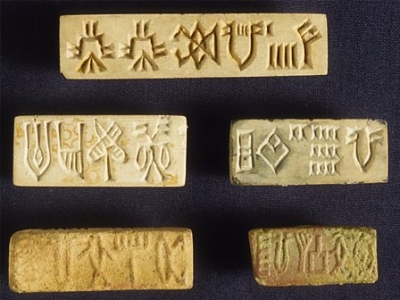
Several artefacts and relics were unearthed during the excavation of Mohenjo Daro by archaeologists. Most of these are preserved and on display at the National Museum, New Delhi. Some of the notable artefacts discovered are:
The Dancing Girl
Dating back to 2,500 BC, this is one of the rarest artefacts found the world-over. The artifact depicts a woman who looks like she is dancing. Hence, the name ‘Dancing Girl’. The bronze statue suggests two important facts about the Indus Valley Civilisation – the artists knew metal blending and casting, and the civilisation had dance and other performing arts as modes of entertainment.
Mother Goddess idol
Discovered in 1931 by Hohn Marshall, this terracotta idol was made between 2700 and 2100 BC. According to archaeologists, the figurine suggests the Mother Goddess cult was wide-spread during the days of the Indus Valley Civilisation.
The Priest King
Discovered in 1927, and sculpted around 2,500 BC, this is a statue of a seated male with a neat beard, pierced ears, and a fillet around his head. He also wears a clock and an armband. The statue, which is 17.5 cm tall, is made of soapstone.
Though there is no evidence of a king or a priest having ruled Mohenjo Daro, archeologists dubbed this figure the ‘Priest King’.
Pashupati Seal
Engraved between 2500-2400 BC, this artefacts is considered one of the most significant Indus finds. It is a seal which bears the image of Shiva, suggesting the existence of a Shiva-cult during the Indus civilization. The seal is engraved on a chip of steatite, a soft stone which is decay-resistant.
Present state
Many archaeologists believe that not must is being done to protect the ruins. The faces challenges from rising temperatures, which sometimes soar over 46 degrees Celsius. Salt from the underground water table is also said to be damaging the ruins.
More than the weather and time, archaeologists believe that it is fight against militancy and neglect by people that will lead to the eventual disappearance of the ruins.
Picture Credit : Google

